About 30 years ago, osteochondrosis was associated with only older people, and its joints became inactive and harmless due to each exercise. However, time has changed. Today, more and more people are changing the hard work of sedentary work on computers, monitoring the quality of food less and increasingly experiencing osteochondriasis in cervical hotels. No wonder osteocartilage degeneration is called a "Century Disease", and almost everyone aged 25 will experience symptoms of this disease.
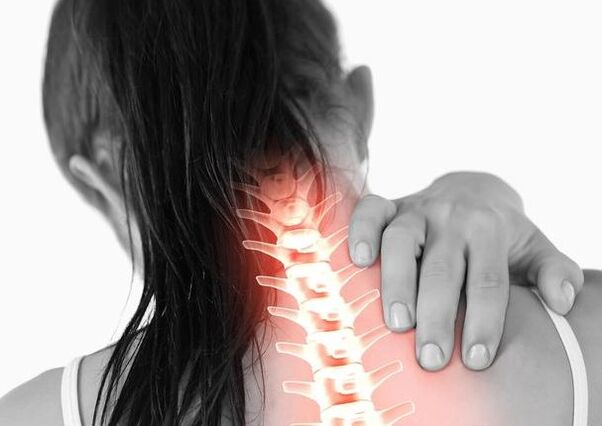
This is a sinister disease that starts with unpleasant pain in the neck, which quickly leads to severe consequences in forms of reduced hearing and vision, and worsens memory until it is completely lost. This is why everyone should understand the causes of osteochondrosis and consult a doctor in time when unpleasant symptoms of the disease. We will talk about them in this article.
Causes of osteochondrosis in the cervical area
Paradoxically, all our problems with the cervical spine start with young children, or in elementary school, children will worsen their posture and scoliosis. It is at this moment that the system that maintains the head of the spine, especially the most delicate and fragile sector - the cervix. From a distant childhood, the second key factor in osteochondrosis in the cervical area is the inadequate body preparation, especially the weakness of the spinal muscles and the SO muscle corset designed to support the spine.
These are the two most important causes of the disease. The rest, heavy loads fall on the weak spine, causing disease development in very young and healthy people. First, they include a sedentary lifestyle and lack of physical exercise, especially work, which is related to long-term accommodation. This is the most characteristic of drivers and office workers, replaced on computers. All of this is filled with too much weight, which seriously increases the load on the spine.
Among other causes of cervical osteochondral myelosis, it should be distinguished:
- Spread spinal injury;
- Metabolic invasion;
- Genetic tendency;
- A lot of physical fatigue;
- Constant nerve tone and stress;
- abnormal cervical vertebra development;
- Bad habits (holding the telephone tube with your ears and shoulders).
The development process of osteochondrosis
The adverse factors listed ultimately lead to increased cervical spine load. When trying to compensate for excessive load on the neck muscles, spasms occur, causing the area to violate blood circulation and reduce the metabolic process. All of this becomes the development of the spinal degeneration process. First, the vertebrae begins to become thinner, close to, extruding its contents (annuclear fibrous) out of the spine. In the language of a doctor, this prominence is called prominence.
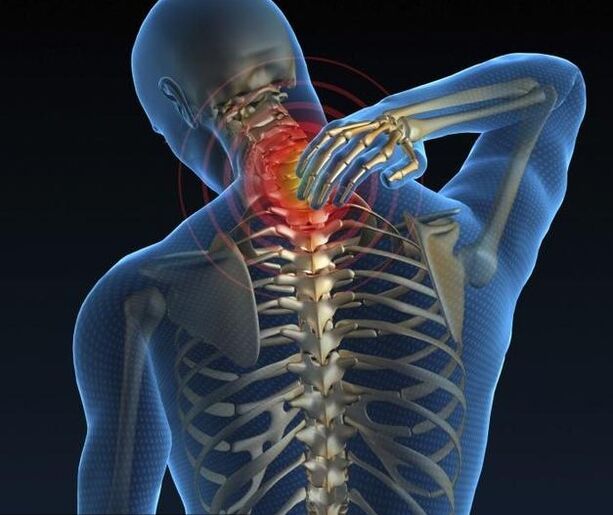
In the case of protrusion, the fibrous annulus still retains its integrity, but the protrusion has squeezed the blood vessels and nerves along the spine and feeds the brain. In addition, the fused and deformed vertebrae begins to squeeze the roots of the peripheral nerves, which leads to the development of SO known as "radiation syndrome", which manifests severe back and neck pain. If you are unsure of the problem (which unpleasant symptoms will be an eloquent signal) and do not start treating osteocartilage, the annulus of fibrous fibrous will rupture and the vertebral hernia will appear. In this case, serious brain nutrition problems will occur.
Symptoms of cervical osteochondrosis
In its development, the disease passes through several stages, each with characteristics and symptoms. It should be noted here that osteochondrosis in the cervical spine is different from degenerative changes in other parts of the spine. The distance between the vertebrae here is small, so even small changes can cause unpleasant symptoms and lead to various complications.
First-grade osteocartilage degeneration.This is the preclinical stage of disease development, where patients experience mild pain and discomfort when turning, tension and rapid fatigue in the neck and neck are in one position (usually sedentary). At this stage, osteochondrosis is perfectly treated with changes in lifestyle, nutritional correction and regular physical exercise.
Osteochondrosis of degree II.Instability occurs between the vertebrae of the neck at this stage. In this case, a person faces severe pain, which is given to the shoulders, neck or hands. During tilting or turning of the head, the pain increases significantly due to the reduced distance between the vertebrae and the nerve ends begin to invade. The patient began to get tired quickly, his performance decreased, distraction, forgetfulness, and headache torture.
Osteochondrosis of degree III.As the third stage of the disease begins, pain in the back and neck becomes more intense, and the movement of the neck decreases significantly, and a large pile of vertebrae can be heard as the neck turns. At night, the patient starts to numb with his fingers (mainly fingers and ring fingers), which is why a person wakes up several times a night. All day, such patients have unpleasant severity in their hands. Even having a brief conversation on the phone, a person being forced to lean his phone near his ear turned into an unpleasant sting and numbness. All of this suggests an increase in protrusion, and the possibility of hernia in the cervical area.
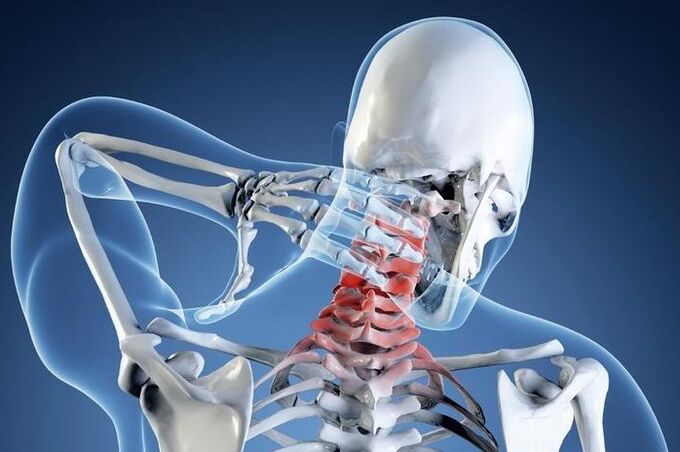
Intravenous osteochondral disease.In the final stages of the disease, vertebrates are destroyed, stop performing their functions and begin to be replaced by connective tissue. Patients in this state may observe behaviors that violate motor coordination, noise, crazy ear pulsation, enhanced headaches, reduced vision and hearing. In some cases, numbness in this language may be observed.
It should be said that due to the metastasis of blood vessels, blood flows into the brain. Therefore, patients suffer from neurological diseases such as insomnia, neuroticism, irritability and resentment, frequent mood swings, and inability to concentrate. An outbreak of anger or fear may occur regularly to attack desire and depression.
In the later stages of osteochondrosis development, the strongest cramps in the blood vessels can lead to the appearance of "flies" in front of the eyes, which are erratic sensations on hard, flat surfaces, intense dizziness, migraines, nausea, vomiting and frequent verbalizations.
diagnosis
To determine the cause of the pathology, the patient described the unpleasant symptoms of the doctor in terms of the condition. After hearing the patient, the expert sent him to one of the following research methods.
Radiography.Currently, this diagnostic method is considered to be informative, especially in the final stages of disease development.
Ultrasonic double scanning.Use this method when experts are involved in invading arterial flow. The study showed the flow of blood and determined whether there were obstacles in its pathway.
CT (Computed Tomography).Compared to X-ray, the method is more informative because not only reveals the problem, but also determines the presence and size of the hernia, although difficult.
MRI (magnetic resonance imaging).The most useful method to diagnose osteochondrosis, which allows you to figure out the bone structure, the presence of hernia, and even its development direction.
Treatment of osteochondrosis
We will immediately say that to solve a serious problem, such as osteochondrosis in the cervical area, you should turn to a neurologist. Indeed, if the clinic has a doctor among vertebral scientists, it is best to contact him first. You can only treat osteocartilage in full. Complexes of the methods used include drug therapy, massage of the high cervical area, exercise therapy, physical therapy approach, and appropriate nutrition. Only a combination of all these approaches can help deal with the disease and normalize the health of the patient.
Helps severe pain
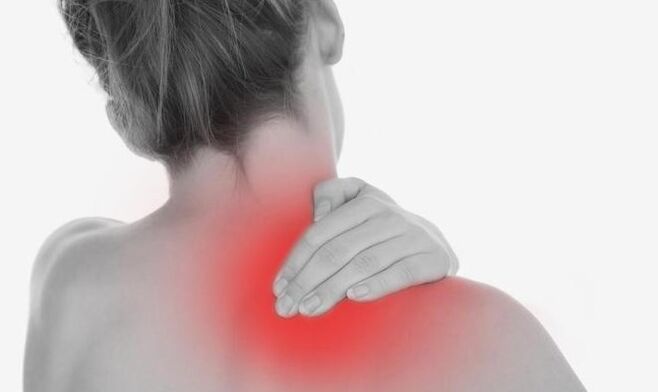
In the case of severe pain syndrome, doctors recommend taking pain medication. When these funds no longer bring relief, you can switch to non-replacement anti-inflammatory drugs.
In a general sense, drug therapy includes the following funds:
- NSAIDS (non-steroid anti-inflammatory drug). These products eliminate pain, relieve swelling and cope with inflammation in the nerve roots.
- Cartilage protector. These drugs perfectly restore damaged cartilage tissue.
- B vitamin B. They are essential for improving metabolic processes in neural tissues.
- musorelaxant. The effects of these drugs are designed to reduce muscle cramps.
- Preparations for improving blood rheology characteristics. Thanks to this method, the flow of oxygen and nutrients to the brain and nerve ends has improved.
It should be noted here that it is possible to gain a tangible role in the fight against osteocartilage only when drug treatment is combined with other treatments. Otherwise, the drug will only have temporary effects.
Many experts tend to treat osteochondrosis with injections to quickly affect nerve endings and to save patients from possible side effects when taking tablets. However, it is best to take vitamins orally, because vitamins are fully absorbed by any method of taking them, but it can be painful to inject them.
Physical therapy methods
Drug treatment must be used in combination with physical therapy methods. The most effective in this disease are:
- Electrophoresis (combined with drugs). In this case, the drug penetrates the damaged vertebrae under the influence of electric current.
- ultrasound. This exposure allows you to relieve the inflammatory process, relieve pain and improve metabolic processes in your tissues.
- Magnetic therapy. This physical therapy can relieve swelling and eliminate pain.
- Laser therapy. This is a great way to fight the inflammatory process, which can also improve blood circulation.
Diet for osteocartilage
The recovery of affected vertebrae also includes a special diet that normalizes the metabolic process in the body, prevents the deposition of salt, nourishes and restores cartilage tissue, and strengthens ligaments between vertebrates.
To achieve this, first, the patient's diet should be excluded:
- Alcohol drinks;
- fat and deep fried dishes;
- Sharp and salty dish;
- Strong soup;
- Weaknesses and Sdoba;
- Strong tea and coffee;
- kimchi and marinade;
- Canned products.
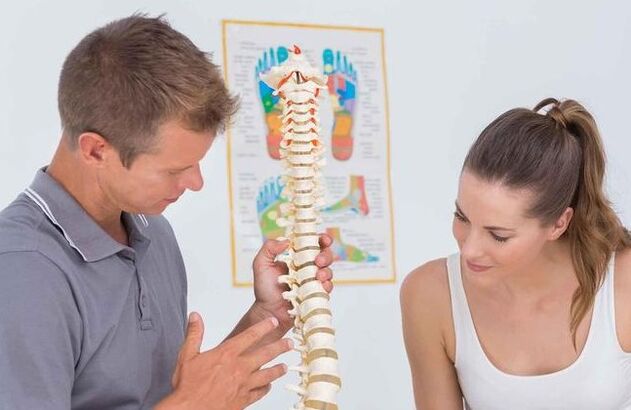
The diet of patients with osteochondrosis should include the following foods:
- low fat and fish;
- low-fat milk, cheese and kefir;
- butter (small amount);
- whole grains and soup;
- jelly, poured from fish or meat;
- Vegetables, fruits and berries;
- Juice, fruit drink, jelly and composition.
When locating osteocartilage degeneration in the cervical vertebrae area, it is important to follow the drinking regimen and drink at least 1. 5 liters of water per day. If you have overweight, then you should consider how to get rid of the extra pounds that will give the spine an extra burden. It is recommended to switch small parts 5 times a day.
At the same time, it can be seen from the list of products allowed to use that the food should be low-fat vegetarian soups, boiled non-fat meats, fish, seafood, unsweetened vegetables and fruits.
The approximate menu for the day will be as follows:
- Breakfast: cheese, a pair of apples, sugar-free tea;
- Lunch: Roasted pears, a little oatmeal;
- Lunch: Vegan, cooked chicken and green salad;
- Afternoon snacks: dry cookies and fruit fruits;
- Dinner: Grilled fish with vegetables and sugar-free tea.
Exercise therapy for osteochondrosis
Physical education has amazing results in the treatment of osteochondrosis, and the fact is that gymnastics for the cervical spine can only be performed during recovery. Here, it is important that the patient will not feel discomfort and pain during massage or gymnastics.
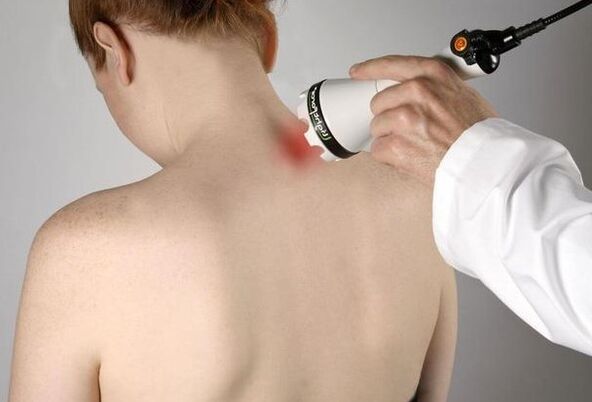
Here are some of the most effective gymnastics exercises designed to strengthen the neck muscles and improve blood circulation in the area.
Exercise 1Lie on your belly, place your hands on the floor, slowly lift your head and torso to keep your back straight. Hold this position for 1 minute and return to the starting position. Repeat the element 2-3 times.
Exercise 2Lying on your belly, stretching your hands along your body, lifting your head slightly, first turn it to the right, trying to touch the floor with your ears, and then touch the floor to the left. Perform 6 turns in each direction.
Exercise 3Sitting on the floor, inspiration, lean forward, trying to reach to your chin to your chest, then exhale, return to your starting position and stretch your head back. Repeat the element 10-15 times.
Exercise 4Secure your palms to your forehead and try to put pressure on. Meanwhile, sprain the muscles in the neck, resist your hand and prevent the head from rejecting. Keep the pressure for 20-30 seconds, then lower your hands and relax. Repeat the element 2-3 times, then repeat the exercise in the opposite direction and place the hand of the grip on the back of the head.
Exercise number 5Start slowly turning right and left, trying to look behind. Perform 10 turns on each side. In good health!














